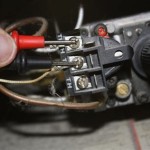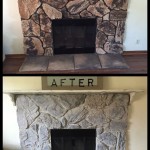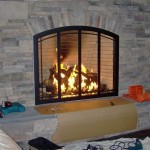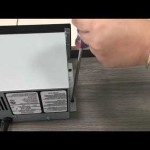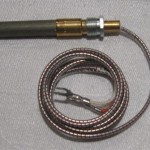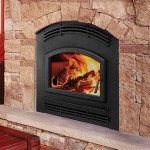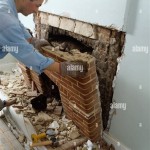Building a Fireplace Mantel Shelf: A Comprehensive Guide
A fireplace mantel shelf serves as a focal point within a room, providing both aesthetic appeal and functional space for displaying decorative items. Constructing a fireplace mantel shelf is a manageable project for individuals with basic woodworking skills and access to essential tools. This article details the process of building a solid and visually pleasing mantel shelf, encompassing planning, material selection, construction techniques, and installation considerations.
The initial stage entails meticulous planning, including determining the desired dimensions of the mantel shelf. Factors to consider encompass the width of the fireplace, the height above the firebox, and the overall proportions of the room. A scale drawing or digital rendering can aid in visualizing the finished product and ensure accurate material calculations. Consider the type of wood that will be used, choosing a wood that matches the current aesthetic of the room.
Material selection plays a crucial role in the longevity and aesthetic quality of the mantel shelf. Hardwoods, such as oak, maple, cherry, and walnut, offer superior durability and visual appeal compared to softwoods like pine. However, softwoods can be suitable for painted mantels or projects where budget constraints are a significant factor. Plywood, while offering stability and affordability, often requires careful edge treatment to conceal the layered construction.
Once the design and materials are finalized, the construction phase can commence. This involves cutting the wood components to the specified dimensions, assembling the shelf structure, and applying finishing touches to enhance its appearance and durability.
Key Point 1: Design and Planning Considerations
Effective design and planning are paramount to a successful mantel shelf project. Before commencing any physical work, careful consideration should be given to the following aspects:
1. Dimensions and Proportions: The dimensions of the mantel shelf should be proportional to the size of the fireplace and the room. A mantel that is too large can overwhelm the space, while one that is too small may appear insignificant. Measure the width of the fireplace opening and consider extending the mantel shelf slightly beyond this width on either side. The height of the mantel above the firebox is also critical; adhere to local building codes and manufacturer recommendations to ensure adequate clearance and prevent fire hazards. Generally, a minimum of 12 inches clearance is required above the fireplace opening.
2. Style and Aesthetic: The style of the mantel shelf should complement the existing architectural style of the room. Consider whether a rustic, traditional, modern, or contemporary design is most appropriate. Examine the existing trim work, furniture, and decor to ensure a cohesive aesthetic. Simple, clean lines are generally suitable for modern settings, while more ornate designs may be appropriate for traditional homes.
3. Weight and Load Capacity: The mantel shelf must be capable of supporting the weight of any items that will be displayed on it. Consider the type and weight of decorative objects, such as vases, picture frames, and books. Design the shelf structure with sufficient strength and rigidity to prevent sagging or deflection over time. Reinforcing the shelf with internal supports or a robust mounting system can enhance its load-bearing capacity.
4. Material Selection: The choice of wood species will significantly impact the appearance, durability, and cost of the mantel shelf. Hardwoods, such as oak, maple, and cherry, offer superior strength, stability, and resistance to wear and tear. Softwoods, such as pine, are more affordable but may be less durable and prone to denting. Consider the grain pattern and color of the wood to ensure it complements the overall design. Plywood can be used for internal components or to create a hollow core, but it typically requires edge banding to conceal the raw edges.
5. Building Codes and Regulations: Consult local building codes and fire safety regulations to ensure that the mantel shelf installation complies with all applicable requirements. Pay particular attention to clearance distances from the firebox and any restrictions on combustible materials near the fireplace. Obtaining necessary permits before commencing construction is crucial to avoid potential fines or delays.
Key Point 2: Construction Techniques and Assembly
The construction phase involves cutting, shaping, and assembling the wood components to create the mantel shelf structure. Accuracy and attention to detail are essential to ensure a professional-looking finished product. The following techniques are commonly employed:
1. Cutting and Shaping: Use a table saw, circular saw, or miter saw to cut the wood components to the specified dimensions. Ensure that the cuts are precise and square to create tight-fitting joints. For curved or decorative elements, use a jigsaw or band saw to shape the wood according to the design. Sand the edges and surfaces of the wood to remove any splinters or imperfections.
2. Joint Construction: Select appropriate jointing methods to connect the wood components. Common choices include butt joints, miter joints, dado joints, and rabbet joints. Butt joints are simple to create but may require additional reinforcement, such as screws or dowels. Miter joints create a clean, seamless look but require precise cutting angles. Dado joints and rabbet joints offer increased strength and stability, particularly for connecting shelves to vertical supports.
3. Assembly: Assemble the mantel shelf structure using wood glue and fasteners, such as screws or nails. Apply glue liberally to the mating surfaces and clamp the components together until the glue dries. Use screws or nails to provide additional holding power and prevent movement during the curing process. Ensure that the fasteners are countersunk to prevent them from interfering with the finishing process.
4. Reinforcement: Reinforce the mantel shelf structure with internal supports or a solid backing panel to enhance its strength and stability. Internal supports can be constructed from wood or metal and should be strategically placed to distribute the load evenly. A solid backing panel provides additional rigidity and prevents the shelf from sagging under heavy loads. Consider adding corbels or decorative brackets to visually reinforce the shelf and enhance its aesthetic appeal.
5. Edge Treatment: If using plywood or particleboard, apply edge banding to conceal the raw edges and create a more finished look. Edge banding can be made from wood veneer, plastic, or iron-on tape. Apply the edge banding using a heat-activated adhesive or contact cement, and trim any excess material flush with the surface. Sand the edges smooth and apply a matching finish to blend seamlessly with the surrounding wood.
Key Point 3: Finishing and Installation
The finishing and installation stages involve applying a protective coating to the mantel shelf and securely mounting it to the fireplace wall. These steps are crucial for enhancing the appearance, durability, and safety of the finished product.
1. Sanding and Preparation: Before applying any finish, thoroughly sand the mantel shelf to create a smooth, even surface. Start with a coarse grit sandpaper (e.g., 80-grit) to remove any imperfections or scratches, and progressively move to finer grits (e.g., 120-grit, 220-grit) to achieve a polished finish. Vacuum or wipe down the surface to remove any dust or debris.
2. Applying the Finish: Choose a finish that complements the wood species and the overall aesthetic of the room. Options include polyurethane, varnish, lacquer, stain, and paint. Polyurethane and varnish provide a durable, water-resistant finish that is suitable for high-traffic areas. Lacquer offers a fast-drying, high-gloss finish that is ideal for modern settings. Stain can be used to enhance the natural color of the wood or to create a custom tint. Paint provides a solid, opaque finish that can be matched to any color.
Apply the finish according to the manufacturer's instructions. Typically, multiple coats are required, with light sanding between each coat to ensure a smooth, even surface. Allow the finish to dry completely before handling or installing the mantel shelf.
3. Mounting Hardware Selection: Select appropriate mounting hardware to securely attach the mantel shelf to the fireplace wall. Options include screws, anchors, and mounting brackets. Screws are suitable for attaching the shelf to solid wood framing, while anchors are necessary for mounting to drywall or masonry. Choose anchors that are specifically designed for the type of wall material and the weight of the mantel shelf. Mounting brackets provide additional support and can be concealed behind the shelf.
4. Installation Procedure: Locate the studs in the fireplace wall using a stud finder. Mark the desired location of the mantel shelf and pre-drill pilot holes through the shelf and into the studs. If mounting to drywall or masonry, use anchors to provide a secure attachment. Use a level to ensure that the mantel shelf is perfectly horizontal. Drive screws or bolts through the shelf and into the studs or anchors, tightening them securely. Conceal the fasteners with wood plugs or decorative caps.
5. Final Inspection: After installation, thoroughly inspect the mantel shelf to ensure that it is securely mounted and level. Check for any gaps or imperfections and address them as needed. Test the load-bearing capacity of the shelf by placing a representative sample of decorative objects on it. Ensure that the shelf is stable and does not sag or deflect under the weight.
Proper planning, careful construction, and meticulous installation are essential for creating a fireplace mantel shelf that is both aesthetically pleasing and structurally sound. By following the guidelines outlined in this article, individuals can confidently undertake this project and enhance the beauty and functionality of their living space.

See How Our Modern Diy Fireplace Mantel Shelf Updated Living Space

I Love How This Simple Diy Mantel Changes The Fireplace Find Out To Build A Or F Shelves
:max_bytes(150000):strip_icc()/sandandsisal-bdc76ad938a44d28ae9e23ef6c9fa331.jpg?strip=all)
17 Diy Fireplace Mantel Plans

Easy Fireplace Mantel Diy

How To Build A Diy Mantel Shelf Simply Home
:max_bytes(150000):strip_icc()/ablossominglife-4151b41015a64193a437e981c3aad037.jpg?strip=all)
17 Diy Fireplace Mantel Plans

Diy Rustic Fireplace Mantel The Cure For A Boring

Build A Fireplace Mantel

See How Our Modern Diy Fireplace Mantel Shelf Updated Living Space
:max_bytes(150000):strip_icc()/remodelaholic-6ed1d077bb0744c5ae6f656273fbc540.jpg?strip=all)
17 Diy Fireplace Mantel Plans
Related Posts

